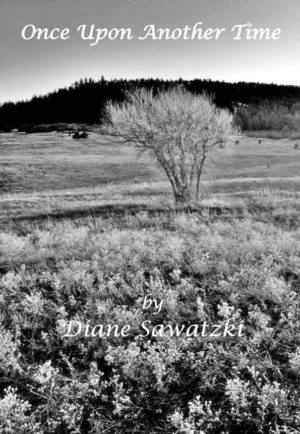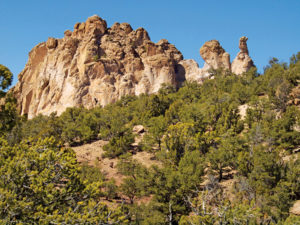By Daniel Smith
Photos by Mike Rosso
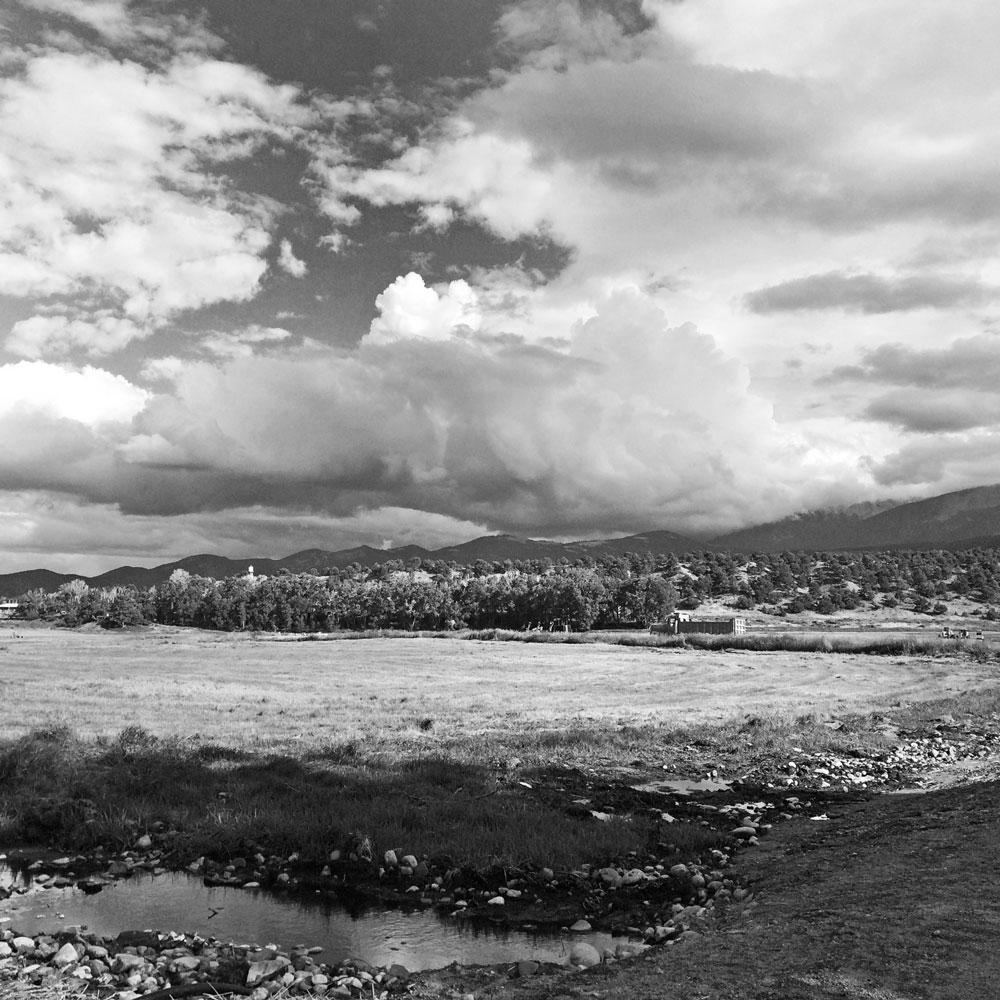
From cattle ranch to golf course subdivision, center for natural resources to concert venue, on to citizen-driven development: WHAT’S AHEAD?
Over the years, various visions for the 192-acre property have been floated by planners and city leaders. The former Vandaveer Ranch property on Salida’s eastern border has been a work in progress more than a decade and appears to be moving closer to fruition.
There has also been a fair amount of controversy and criticism about the project, while its supporters, embracing a long-term view of its potential, express confidence it will be a major benefit to the community.
Businessman Tim Glenn was a county commissioner at the time the sale of the Vandaveer Ranch was in process in 2004. He was also a member of the Natural Resource Center Development Corporation (NRCDC), a sparkplug organization in the development process since its inception.
Glenn said the county was not all that involved in the process outside of the annexation of the land from the county to the city.
“My perspective was it’s probably the smartest thing the city of Salida has done in years …” he states. “In 1957, they bought the Harrington Ditch, which was the most senior water on the south Arkansas River, and that was very smart; and the next smartest thing they did came along when they bought the Vandaveer water,” he said.
The $3.2 million dollar price tag for the ranch included the 192 acres – and all-important water rights on the Tennassee Ditch.
“It was a big price tag, but for a city the size of Salida, not really.” Glenn said.
[InContentAdTwo]
He feels the effort to acquire Vandaveer was prompted by the knowledge it would not be an agricultural property.
“The ranch wasn’t going to stay a ranch, that’s all there was to it. Now, my personal preference – cause I’m a rancher – I like to see ranches stay ranches, but we know they’re not always going to do that, and that’s the owner’s choice.”
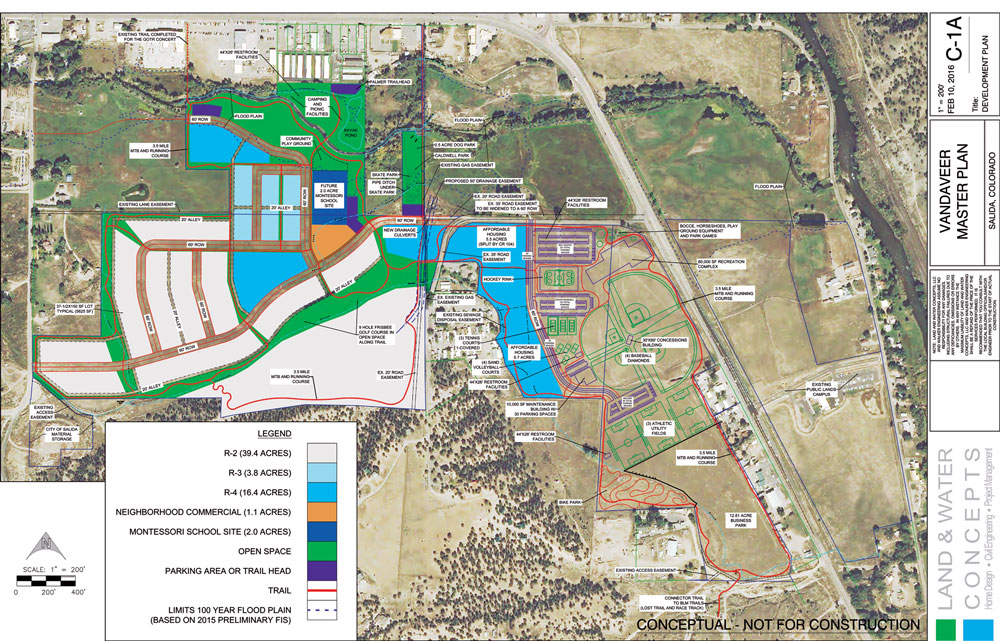
After acquisition survey studies, environmental testing and association legal work were completed. Initially, the contract called for the city to sell no more than 80 acres in the first five years, and no development for the first two years.
Then City Administrator Julie Szymula had a hand in the negotiations and saw the conversion of Tennassee Ditch water from agricultural to municipal use through a water court.
Since acquisition, a number of developer plans have surfaced.
One of them was Littleton area developer Courageaux, which announced extensive plans for an 18-hole golf course, 250,000 square feet of commercial space, hundreds of various types of housing units and more, in late 2007.
It agreed to purchase the property for around $7 million, under a payment schedule, but soon defaulted in the wake of the deepening recession. The city decided to use reserve funds from the budget to pay off what was owed for the land. More than $1,600,000 came from general fund reserves, along with $760,000 from the water reserve fund.
The city had an agreement with the Vandaveers for staggered payments for the land, but that put Salida in violation of the Colorado Taxpayer Bill of Rights over a ban on entering into a multiyear deed of trust. Paying the debt off early, despite concerns over budget reserves, also avoided a large balloon payment of $1.84 million in 2014, officials pointed out.
After that episode, Glenn said he and others got behind an earlier idea of a Natural Resource Center on-site to bring all the land management agencies under one roof locally. The U.S. Forest Service (USFS) required its office to be located near a major thoroughfare (U.S. Hwy. 50), and Vandaveer seemed to provide that, Glenn remembers.
When the USFS was ready to move, it provided an opportunity.
“I just happened to mention to Jack Lewis, who was city administrator at the time, ‘you know, would Salida have any interest whatsoever in making some of this land available for this project, and Jack’s like ‘Yeah.’ And then Jack got behind it and pushed it and it came about,” Glenn said.
Glenn was also appreciative of several other supporters’ work over a lengthy period of time, including former city councilman Tom Yerkey.
A groundbreaking for the new USFS building was held in July of 2012, and construction was completed soon after. Plans for additional agencies to join the Resource Center and perhaps attract satellite campus participation by Colorado State University or other institutions are still active.
The long-term prospect for Salida is encouraging, he says.
“I think the people of Salida will see, in the years to come, that it probably was something that was a huge benefit, not only from the perspective of water but from the land as well.”
“I think it’s just going to be a great deal for the city all the way around,” Glenn added.
Community Development Director Dan Osborn, reins in hand for about two years, is confident progress is on the near horizon, with the economy recovering and fresh input from the public and stakeholders about what’s needed in future development of Vandaveer.
Importantly, he feels the community should realize the advantages Salida already has with the land acquired by leaders 12 years ago.
“As far as serving the needs of the public, we’ll never have to worry about water again; they’re very senior rights and there’s enough that we can cover – I heard the number thrown around, almost up to 20,000 people. In Colorado and anywhere in the arid West, that’s a nice position to be in,” he said.
“We’ve got a current plan that’s been updated a couple of times over the years, but the main thing was they wanted to be able to provide for additional growth in housing, they wanted to provide if there was going to be the opportunity for some sort of educational campus and for commercial growth,” he noted.ormal development plans and zoning started in 2006, as a next logical extension of the city given its geographic limits. Osborn credits the early planners with having the vision and taking the risks to make it happen.
“We want to be able to use this as a generator to drive jobs, to drive jobs to drive services we need in this city …” he added.
While there are concerns about costs associated with the development and mortgage and how it will be paid for, Osborn feels the future will bear out the wisdom of the decision.
“We kick off development there, we don’t need to worry about it – it’s going to pay for itself and we’re not going to need to worry about it. We continue to kick the can down the road, we could have problems,” he added.
In 2007, the Courageaux development plan was submitted. When it failed, development plans were relatively quiet for a time until the council in 2009 realized a need for an advocate organization to actively market the property.
That was the birth of the NRCDC, to spark the development efforts, and the USFS complex came about, with ongoing efforts to bring in more land management agencies.
The former Vandaveer property is now divided into several sections based on recent hearings, including recreation, affordable housing and assisted living. Surveys in the past have affirmed the housing needs are critical and housing will come first.
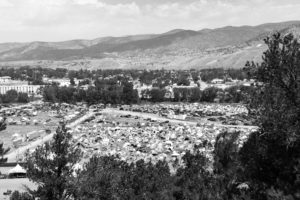
With a shortage of land in Salida, builders in town are interested in getting in the mix for housing lots in Vandaveer.
More current discussions surrounding gas and water service into the area are progressing, including expanding a smaller Atmos Energy natural gas line to a four-inch service line, and plans to bring service about 150 feet across U.S. Hwy. 50 to C.R. 104 in exchange for some land trade or other consideration. Any other extension, including water and sewer lines out to C.R. 107, would be shouldered solely by the developer.
A non-binding letter of intent exists now with a developer to explore the possibilities. The city surveyed the community in January and February regarding amenities the community wants and what will best fit. Those public comments have been individually recorded.
Athletic fields and a large recreational facility are part of the future plans, along with hiking trails, based on community surveys with numerous stakeholders. Also in the mix are a dog park, frisbee golf and even a training pond for kayak instruction. User groups and stakeholders can be included in the plans and take ownership as development moves forward, Osborn said.
Pinto Barn, a private business, purchased 15 acres of land near the resource center and has a vision for an educational arts campus, restaurant, production facility and shops.
While some frequent critics may call progress too slow or halting, it’s important to keep in mind city planning is a complex, dynamic process.
“These are living documents; economies change, people change, interests change through time, and as we work through this we need to continue to have community conversations … my job is to facilitate the conversation,” Osborn said, “and hopefully be able to get buy-in from the different stakeholder groups and work with our elected officials to put out there the best plan that the community wants. By no means do I think we’re going to solve everybody’s problems and be able to address every concern. But I think that we can get most of the way there and come up with something that’s going to be a clear benefit to the taxpayers, to the city, to visitors, that kind of thing.”
“With this plan we’ve been very, very careful to try to lay out a land use pattern that mimics what we already have in the established parts of town as far as your mix of housing types, a mix of income levels …” he added.
Commercial amenities designed into the concept that complement the development, but not compete with what downtown Salida already offers the community, is also an important consideration.
The first meeting this year brought forth some criticisms about the overall plan, he said, but revisions were made based on comments, and more of a community buy-in was evident at the second session.
The NRCDC board reviewed the plans and is expected to make a recommendation to council to accept the plan and write letters of intent for starting the initial phases.
The next steps will include updating entitlements from indications of interest and intents from developers through various stages: subdivisions, zoning, lots, building permits and certificates of occupancy.
The newest subdivision in town, Osborn notes, already has all lots spoken for, an indication of the waiting demand.
“I’d like to think that the plan has integrity and that the process has integrity, and we’ll continue to refine it and continue to work with the different stakeholder groups, and those ebb and flow through time,” Osborn said.
Osborn and city staff are working to bring about an organized housing plan at the former ranch that will be the cornerstone for future development to open a new chapter in Salida history. g
Next month: Longtime residents remember the property as the Clifton Ranch, when it was owned by Clarence (C.C.) Clifton, who sold it to Harold Vandaveer in 1957. We’ll explore the history of the ranch in our May issue.
Dan Smith is a former print and broadcast journalist who came to Salida to fish and write his way to inner peace.


